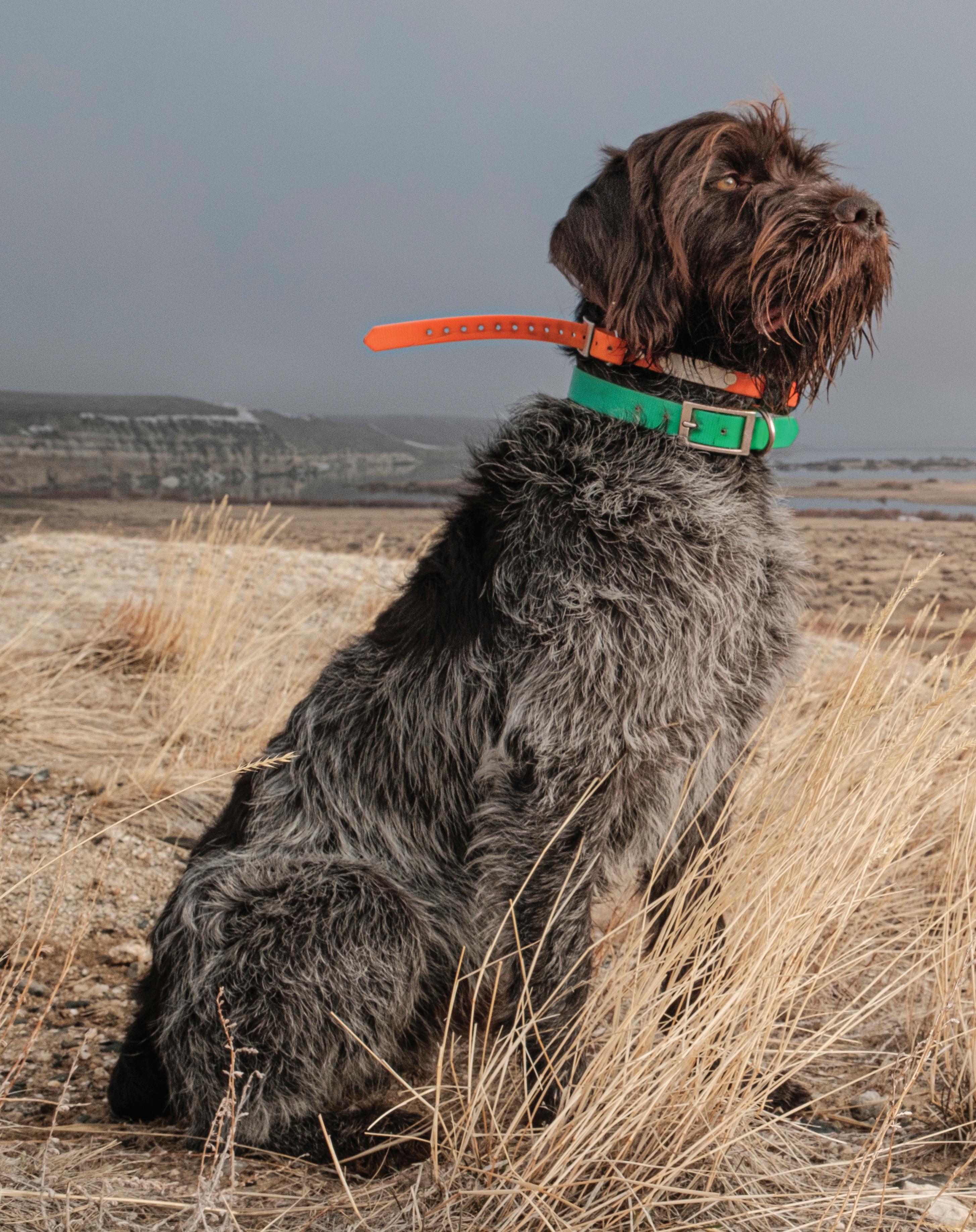
8 minute read
FIELD TO FLY
STORY AND PHOTOS By Mark Lance

Advertisement
With Colorado’s dusky grouse season behind me, I look back at the days and the mileage—the time spent catching my breath in the clean mountain air, lungs on fire and legs achingly tired by elevation gains and descents. The Colorado high country has a lot to teach us about grouse and upland hunting in general. It was the logical place to begin our wingshooting season and avoid the energy-sapping heat of the plains below. Our home turf is also a good place for a reality check: to confirm our fitness, to knock the rust off the mount-swing-bang sequence, and to prove up the hours of training since last season.

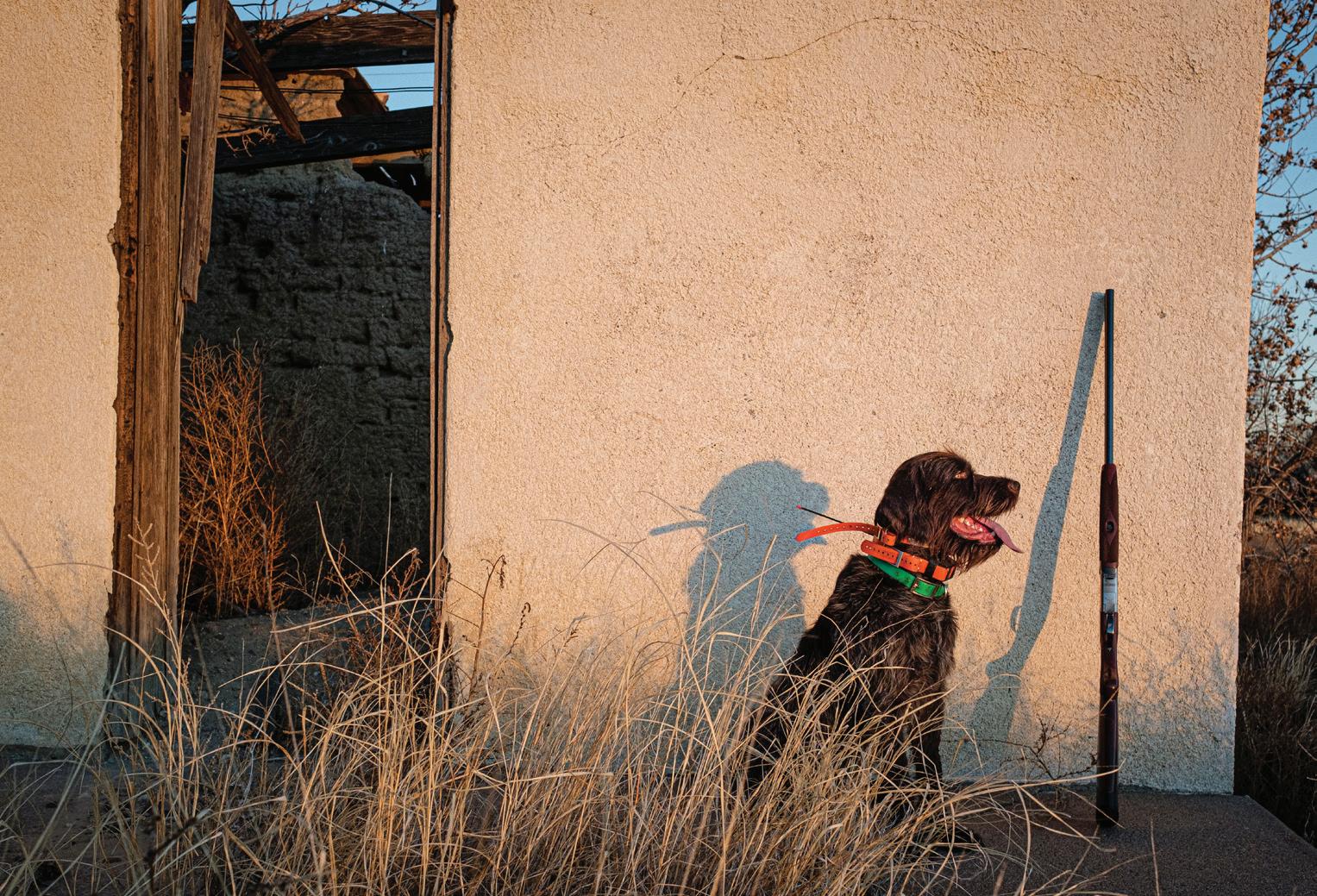
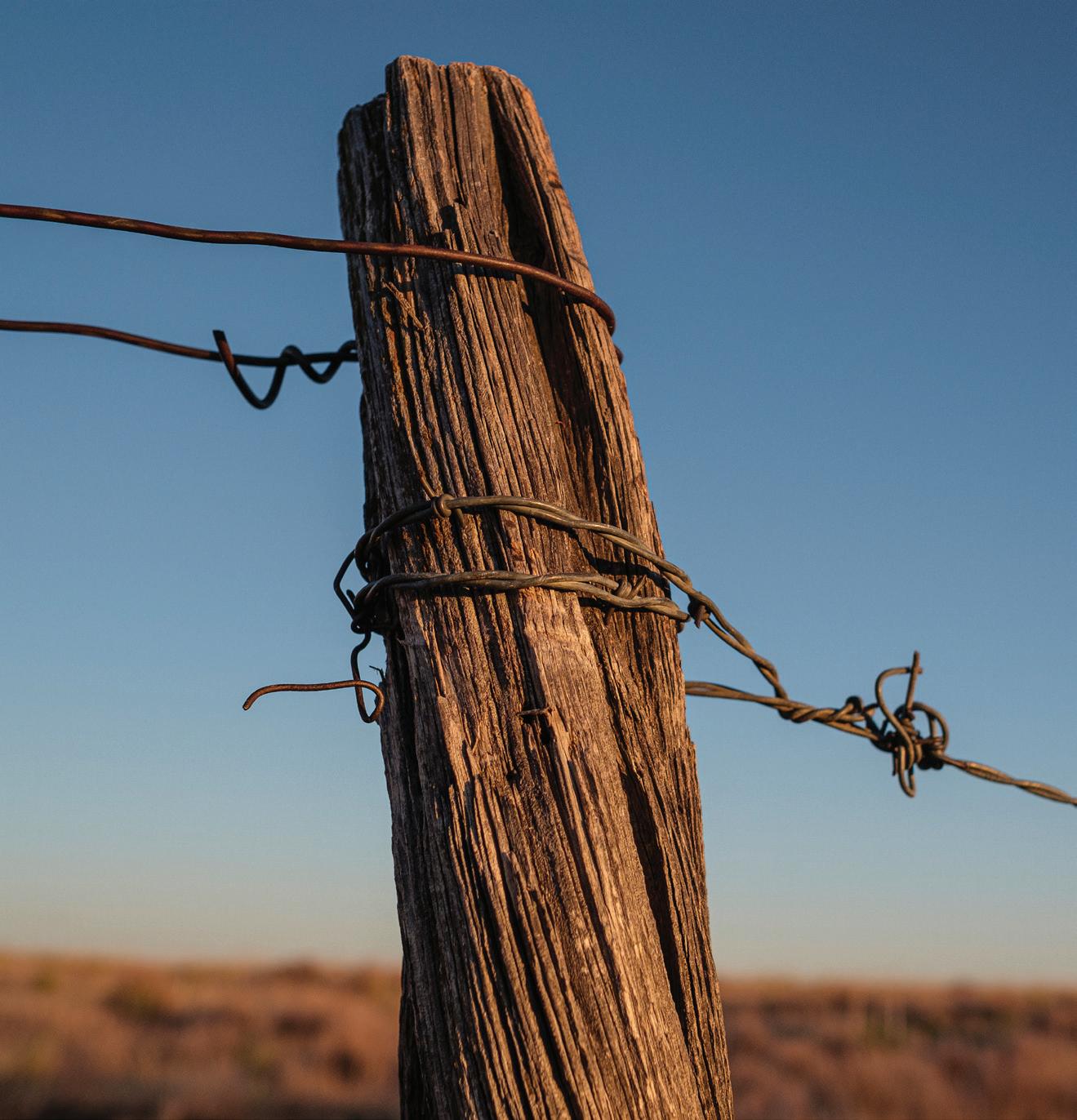
When I say “we,” I mean my bird dog Zeke and me. Mountain grouse in September— “blues,” the old timers call them—is our season-opener tradition. After a couple of weeks hunting them, we look forward to so much more of the upland season: more species, more terrain and covers, more hours on the open road, more time outdoors. With grouse in the game bag, however, I have another itch to scratch.
Although I’ve fallen hard for this bird-dog-upland-wingshooting-wild-game-on-the-table thing, a voice in my head still cries out, What about steelhead? What about trout?! Fly fishing remains a lifelong passion despite the call of the uplands. The fact that my favorite season for swinging flies overlaps with the upland season presents both a quandary and an opportunity.
In the fall, the tilt of the earth whittles away at the daylight hours. Frost blankets the landscape overnight, yet temperatures rise to t-shirt level during the day.
A late September road trip out of Denver took us through the heart of Rocky Mountain upland country. Lots of it. Birds were heavy on my mind as Zeke gazed intently out the window from his “shotgun” position in the front passenger seat. Idyllic country—except for the wind blowing sideways, pinning cover grass flat to the ground. I wondered if it would have the birds pinned down as well, or if an audacious sharptail would move between cover and crop today. Either way, scenting conditions were abysmal. Only the most desperate and diehard hunters would be out.
I had to suppress thoughts of birds, although the driving wind did dull the sting: No, we weren’t hunting this beautiful landscape today. We were just passing through on another adventure, heading north. Way north. Across the country’s northern border. Two more days of hard driving, jet boat in tow, landed us in northern British Columbia with high hopes of wild steelhead. BC rivers are as spectacular as any in North America; the mountainous terrain towering above the valley floor swallows you up. Fly fishing for steelhead, each one swimming upstream on a journey from the ocean to natal waters, is addictive. Pursuing steelhead requires preparation, honed skills, and persistence—not unlike upland hunting. We diligently hit the water at first light morning after morning, driven by hope and addiction. A natural rhythm unfolded as days and eventually weeks of steelheading drifted by. I don’t quantify success by the number of fish hooked or landed; rather, the currency in this game is the richness of the experience: falling headlong into the expansive views of surrounding beauty and feeling the force of big weather on your exposed face, the freedom of movement along the river, and the immersion in a big natural system where humans are incapable of calling the shots. You have to go with the flow. The reward is in there somewhere.
As I have come to realize, this currency and these rewards overlap with my upland sensibilities. While pursuing steelhead I often encounter grouse. The rolling farmland in the valleys and the vast stands of aspen and birch giving way to conifer forests where mountains rise up; clearcuts crisscrossed with an endless array of abandoned logging roads and readily available water all add up to wonderful grouse habitat.
Though British Columbia is in many ways similar to my home-turf grouse habitat, the local grizzly population here meant that I had changed positions on the food chain; as a result, the snap of a twig or plunk of a pinecone falling to the ground took on new meaning. In addition, accustomed as I am to the more open landscape of Colorado, the dense dark forests here would challenge my reflexes to mount and swing my gun before thunderous wingbeats disappeared into the woods. A seasoned New England ruffed grouse hunter would likely chuckle.
What to do?
The phrase “cast and blast,” though descriptive, is clichéd, conjuring images of





conquest and Saturday-morning-outdoortelevision high fives. “Cast and blast” simply doesn’t capture the deep, meaningful connection I feel between upland hunting and fly fishing. It took a while of puzzling over this before I finally put my finger on the crux of the connection: What really pulls these two passions together for me is fly tying.
I have burned countless hours tying my own flies—as a creative outlet, to pass long winter evenings, and of course to match the hatch. My tying bench is littered with loosely organized piles of synthetic materials and feathers from genetically enhanced birds dyed in unnatural hues, all jammed into small plastic packages that I bought exorbitant prices. In my defense, there is also a special box of tying materials on the bench that contains the carefully prepared feathered skins of game birds, all of which were pointed and faithfully retrieved by Zeke. “Zeke’s Box,” I call it. And the flies I tie from those Hungarian partridge, sharptail, blues, and pheasant feathers in the box are “Zeke’s Flies.”
I fashion a number of my flies after the centuries-old Yorkshire spiders. When tying these patterns, one cannot help but feel a connection to the very origins of fly fishing. Silk thread wrapped around a delicate hook, a tiny ball of hare’s mask dubbing, a couple wraps of a single Hungarian partridge hackle, and a neat silk head creates arguably the most iconic soft hackle profile on the water. If you can find them in fly shops, they will be in a bin labeled “Partridge and Orange” or “Partridge and Purple” or something similar. Simple descriptive names from a bygone era. From this simple fly pattern the imagination can run wild—or perhaps run amok, as in my case. These impressionistic patterns, tied from wild game bird feathers, are suggestive of mayflies and caddis either drowned or struggling to the surface. So simple, yet deceptive enough to dupe most fish. You can create the silhouette of larger bugs

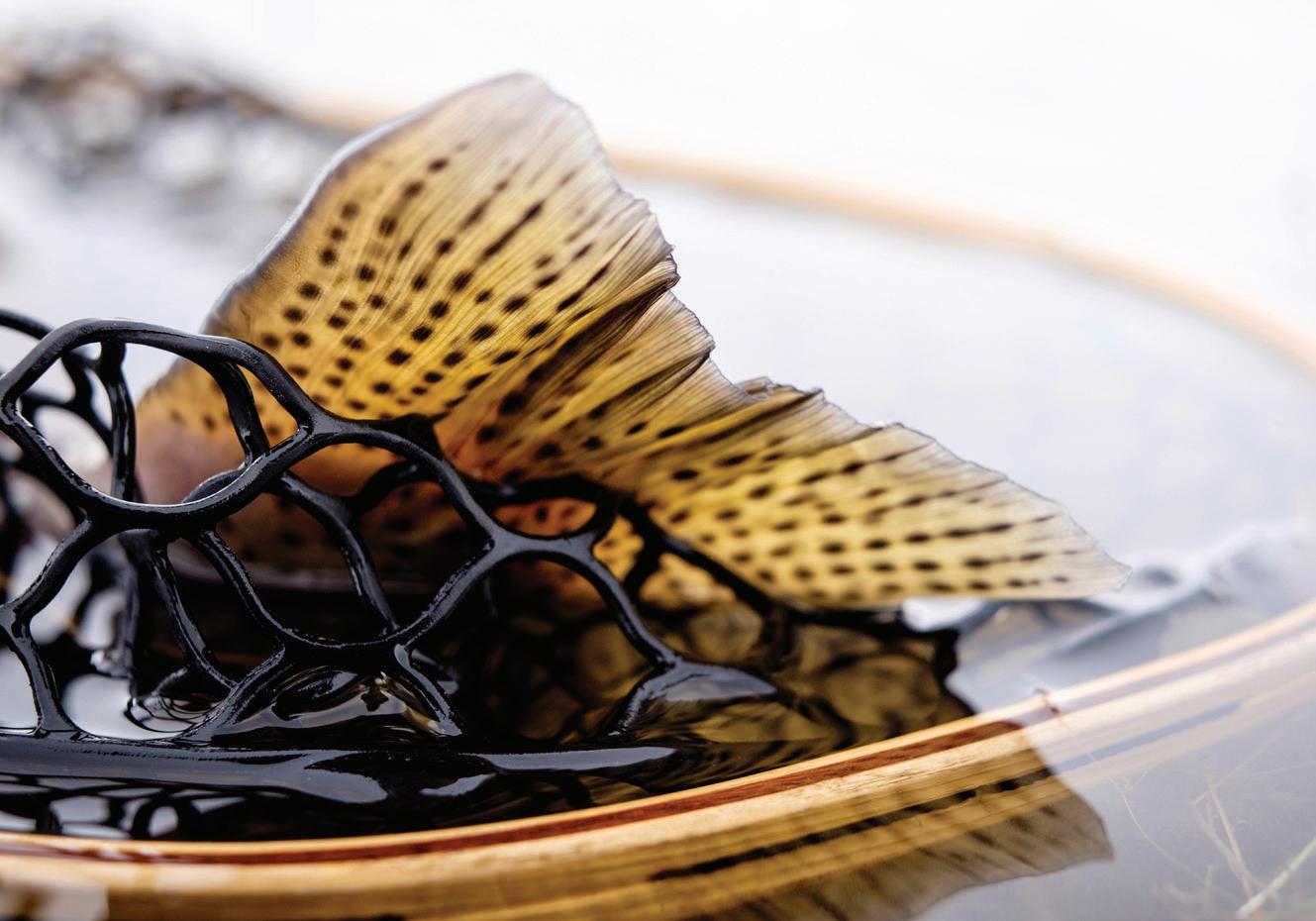
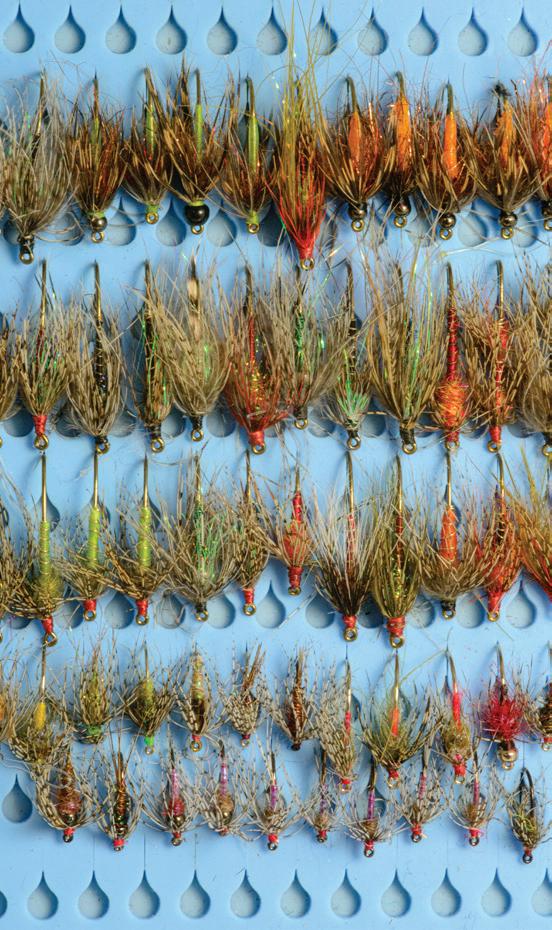

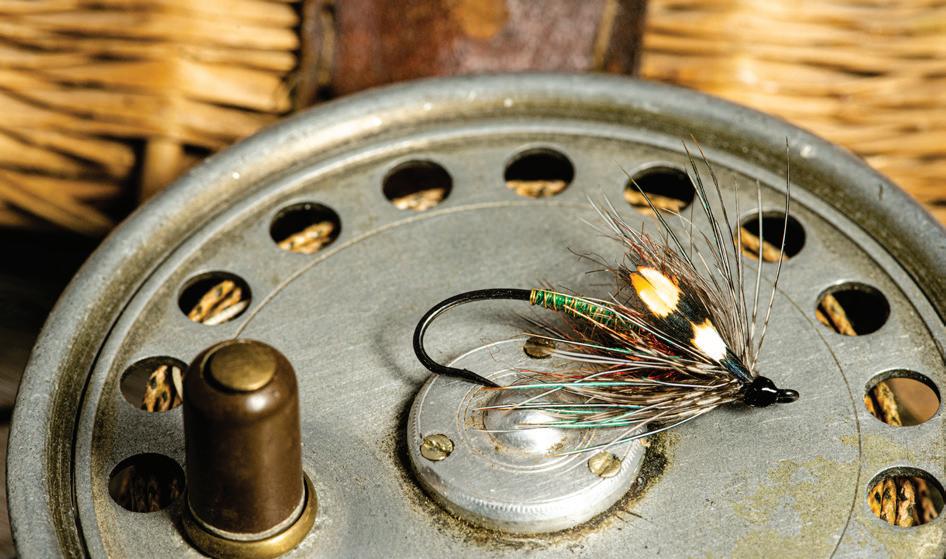
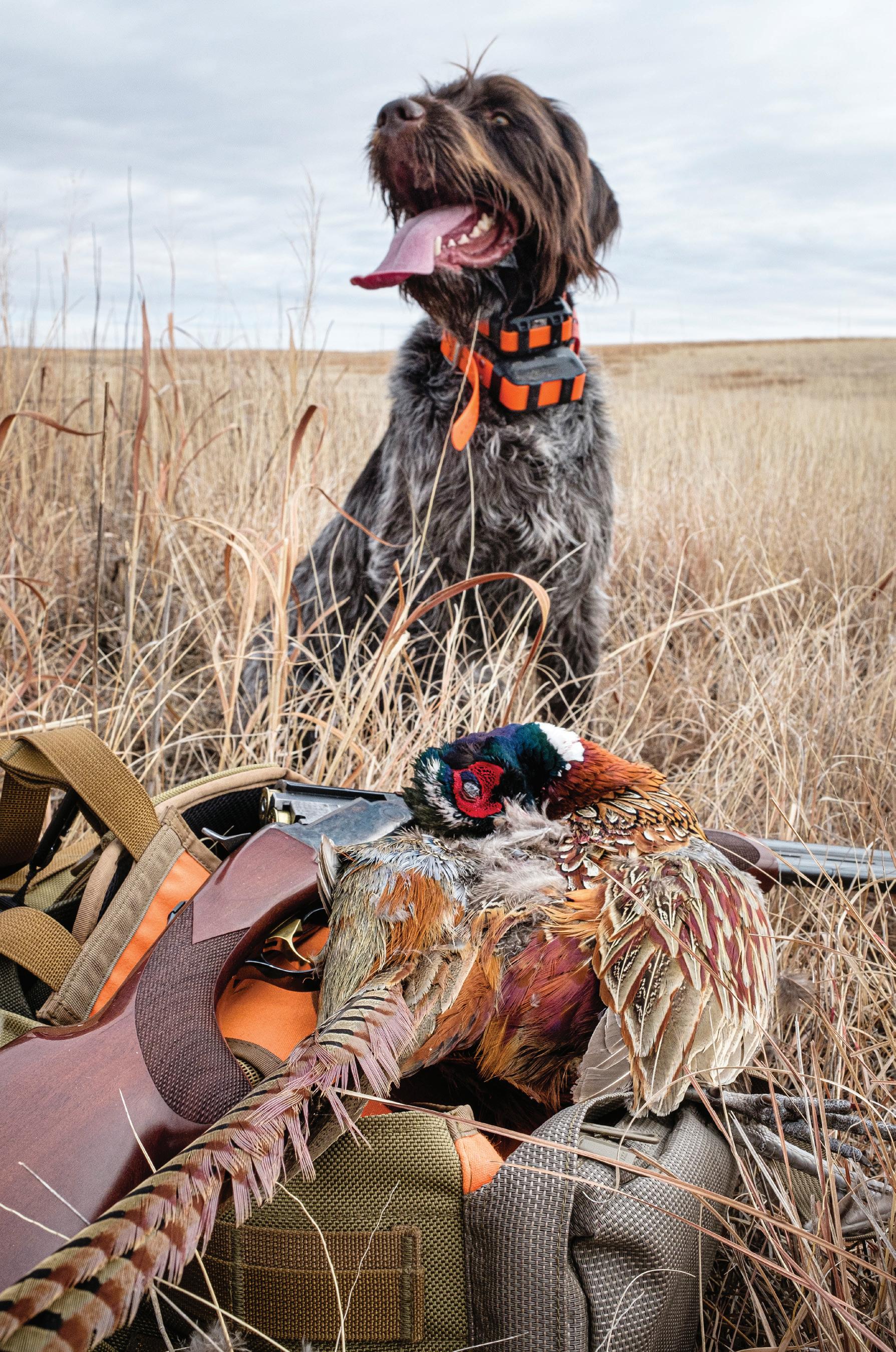

with longer grouse hackle, or double up the speckled grays of hun and mottled browns of grouse to create flies for swinging in burlier water.
Game bird feathers also lend themselves to more modern fly-tying techniques. Composite loops, a technique borrowed from Pacific Northwest steelhead anglers, hold several materials at once and ultimately create the size, shape, and lifelike movement I’m looking for. I include synthetics to the loop for added color and shape before tying on various lengths of the longer fibers stripped from pheasant saddle hackles or the wispy leg plumage from a sharptail. Once the loop of materials is spun and wrapped around the hook, the fly takes on a life of its own. Typically, no two flies turn out the same.
After BC, our upland season marched on across the prairie potholes of North Dakota, the National Grasslands of South Dakota, the Sandhills of Nebraska, and the corn rows of Kansas. In Montana we scratched the fly fishing itch with Bighorn river trout and the wingshooting itch in the nearby hills. In Wyoming we camped and fished and wore down the tread of good boots in search of sharpies and chukar. With a few birds in the freezer the season ended all too quickly, but we had laid down a fine blueprint for seasons to come.
When I have the good fortune to hold a harvested wild bird in my hand, I appreciate its beauty and stand in awe of nature’s design etched in every feather. I strive to honor that bird with a good meal and extend its memory by tying flies from its plumage, which in turn are swung through big Western rivers in search of trout and steelhead. Every day that I hunt behind my dog, I see another day ahead when I can fly fish with feathers from the field. And when I fish with those feathers wrapped upon a hook, I relive a successful hunt in the field. It is through fly tying that I have found a fulfilling and lasting connection between upland hunting and fly fishing.

